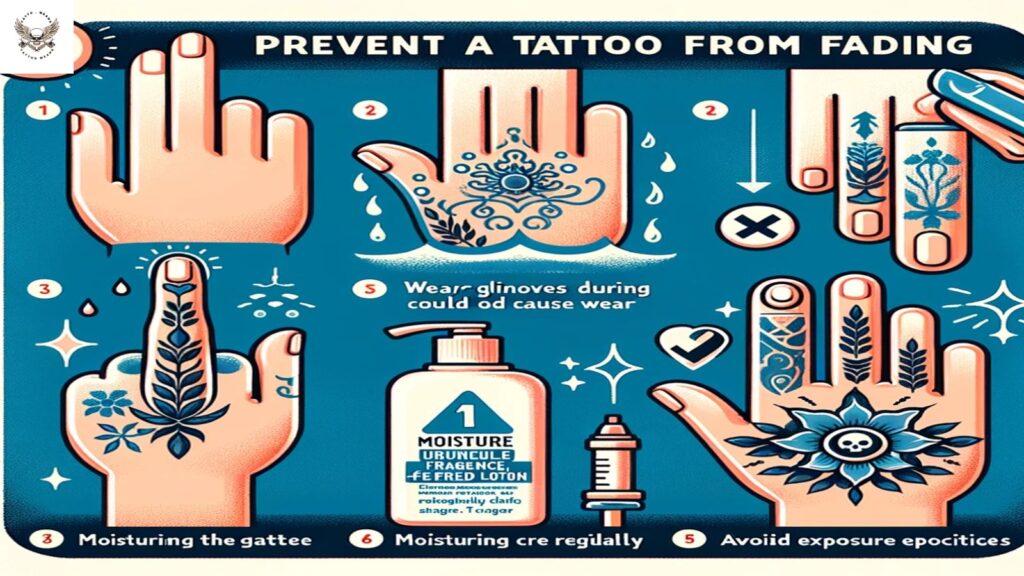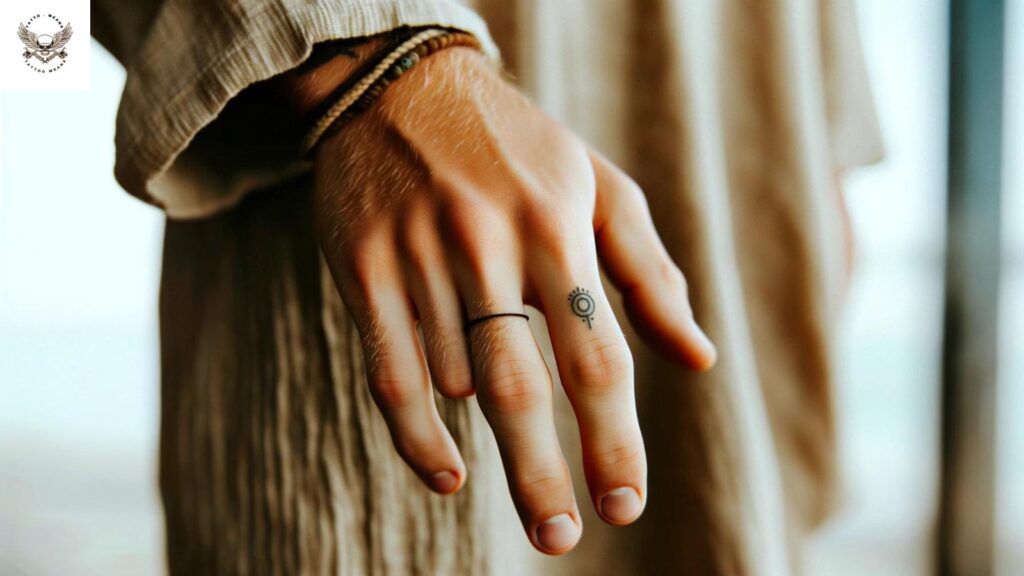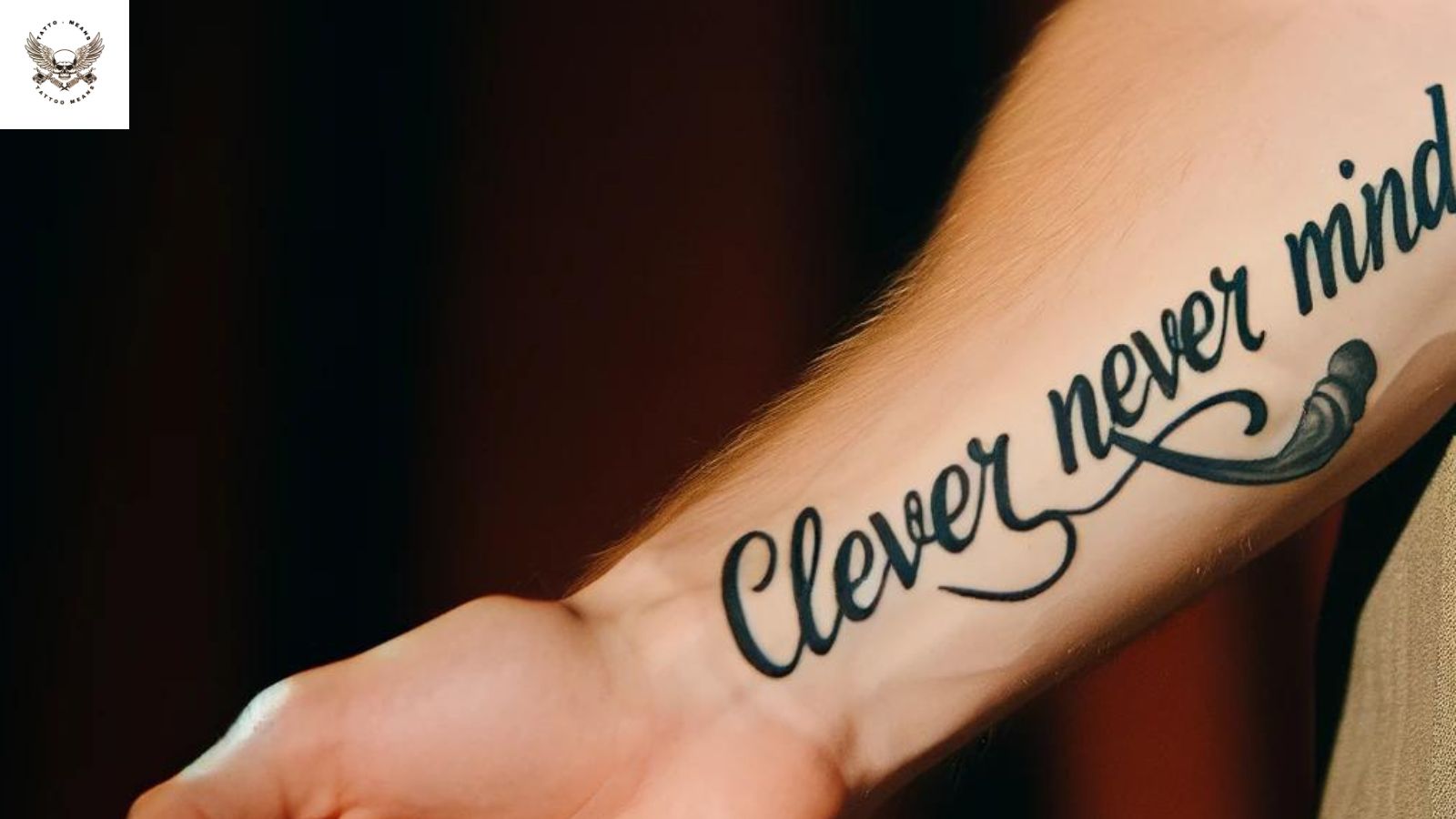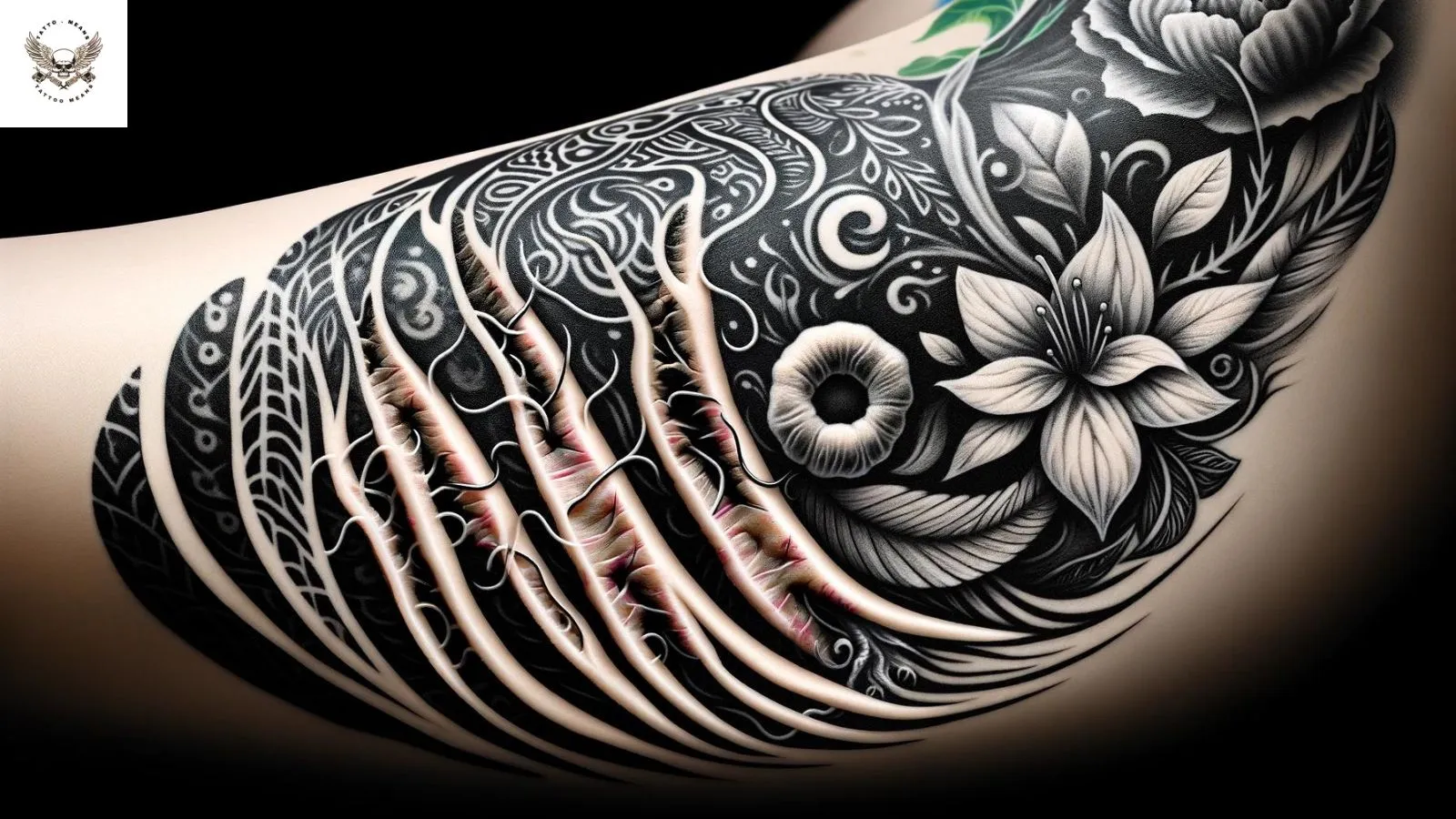Are you curious about the durability of finger tattoos? If you’re asking yourself, ‘When will a finger tattoo start to blur and fade,’ you’re not alone. Finger tattoos are popular for their subtlety and personal significance, but they also face challenges in maintaining their crispness over time and they start to blur within 6 to 12 months.
Factors such as ink quality, aftercare, and daily activities are important in how well these tattoos age. Today, we’ll explore what to expect from your finger tattoo as time passes.

Table of Contents
When Will a Finger Tattoo Start to Blur and Fade?
Finger tattoos typically start to blur and fade within 6 to 12 months after getting inked. This is due to the skin’s high usage and exposure area, along with other factors (that are discussed above) like ink quality and the tattoo’s depth. A study or survey by the Journal of Dermatological Science supports these findings, indicating early fading in high-movement areas.
Do Finger Tattoo Last?
If you’ve ever considered getting a tattoo on your fingers, you might be wondering if they really last. The simple answer is yes, finger tattoos can last, but there are a few important things to keep in mind. The skin on your fingers is different from most other parts of your body. It’s subjected to constant use, exposure, and wear, which can impact the longevity of a tattoo in this area.
7 Tips to Prevent a Finger Tattoo from Fading
Maintaining the shine of your tattoo over time requires thoughtful care and attention to detail. Here are seven expert tips to help prevent your tattoo from fading, ensuring it remains as striking as the day you got it:

Prioritize Sun Protection
The sun’s ultraviolet (UV) rays can significantly fade tattoo ink over time. Applying a high-SPF, broad-spectrum sunscreen on your tattoo before heading outdoors is essential. For added protection, consider wearing protective clothing over the tattooed area when possible.
Moisturize Regularly
Keeping your tattooed skin moisturized is key to maintaining its appearance. Use a fragrance-free, gentle moisturizer to hydrate the area. This not only helps in keeping the skin supple but also prevents the ink from drying out and fading.
Follow Proper Aftercare
Taking good care of your new tattoo is really important. Make sure to wash it, use the special cream your tattoo artist tells you about, and don’t scratch it. It’s like taking care of a little pet – you’ve got to keep it clean and happy so it looks awesome!
Choose Quality Ink and Experienced Artists
The durability of your tattoo is greatly influenced by the type of ink used and the tattoo artist’s skill. Longer tattoo longevity can be achieved with superior ink and a skilled artist.
Stay Hydrated
Drinking enough water is good for skin health in general, even skin that has tattoos. In addition to maintaining skin suppleness, drinking lots of water can help tattoos last longer.
Avoid Soaking
Refrain from immersing your tattoo in water until it has completely healed. This prohibits bathing in bathtubs, swimming pools, or oceans. The appearance of the tattoo may be affected by ink bleeds caused by soaking.
Healthy Lifestyle Choices
To keep your tattoo looking great, it’s important to take care of your skin by staying healthy. This means exercising, eating foods full of vitamins, and taking good care of your body. This helps your skin stay fresh and can make your tattoo look its best for a long time!
Avoid Harsh Chemicals
Harsh chemicals, including cleaning products, can damage your tattoo. Wear gloves when using such products, or avoid contact altogether.
Alternatives of Finger Tattoos
Exploring alternatives to finger tattoos can be beneficial for those concerned about the quick fading and high maintenance associated with tattoos in this area. Here are several attractive options that maintain visibility and uniqueness while offering better longevity and less frequent touch-ups.
- Wrist Tattoos
- Forearm Tattoos
- Ankle Tattoos
- Behind the Ear Tattoos
- Inner Arm Tattoos
- Top of the Shoulder Tattoos
Why Fingers' Tattoo Become Fade Faster Than Others?
Constant Exposure and Friction: Our hands touch lots of things like soap and water and move all the time. Because of this, tattoos on our hands can fade faster than we might expect.
Skin Composition and Elasticity : The skin on our fingers is super stretchy and bends a lot because we use our hands so much. It’s different from the skin on the rest of our body. These mechanical stresses can distort the tattoo, contributing to its fading.
Anatomical Complexity: The hand is made up of many small parts: bones, tendons, ligaments, and joints that work together. It’s like a complex puzzle that allows us to do things like write, play, and pick up objects. The ink may settle unevenly or spread (blow out), leading to a faded or blurred appearance over time.
Ink Absorption Variability: When ink goes onto the skin on our hands and fingers, it doesn’t stay as well as it does on other parts of our body. This means the tattoos can fade or look less clear much quicker than we might think. This happens because the skin on our hands is different and sheds more often.
Skin Cell Renewal: Our skin constantly renews itself, shedding old cells and generating new ones. This natural process causes the tattoo ink to gradually fade because it is a component of the continuously changing skin layer.
Sun Exposure: The sun is one of the biggest enemies of long-lasting tattoos. Tattoos may eventually fade and lose their sharpness due to the ink pigments being broken down by UV radiation. Tattoos can be shielded from the sun’s damaging rays by regularly using sunscreen.
Ink Quality and Depth: Important factors include the type of ink utilized and the injection depth. Better durability is ensured by using higher-quality inks and applying them correctly into the dermis, the second layer of skin. Because cell turnover occurs more quickly on the skin’s surface, inks that don’t penetrate deeply enough may fade more quickly.
Location on the Body: Tattoos on places like your hands, feet, and elbows can fade faster because they rub against things a lot. The tattoo will fade more fast in these regions since they frequently lose skin cells more quickly than less exposed areas.
Individual Lifestyle and Health: Tattoo fading can be influenced by a number of reasons, including skin type, age, and general health. Individuals who lead healthier lives and have better skin may experience longer-lasting tattoos. Furthermore, because smoking negatively affects skin health, it can hasten the fading process.
Aftercare and Maintenance: Proper aftercare following tattoo application is crucial for its longevity. Neglecting aftercare can lead to infections or scarring that can alter the appearance of a tattoo. Regular moisturizing and occasional touch-ups can maintain a tattoo’s vibrancy for years to come.
Which Finger Is Best For a Long-Lasting Tattoo?
The best finger for a long-lasting tattoo might be the one that experiences the least friction and is least exposed. The inside of the finger, where rings are usually worn, is a slightly better spot. This area is somewhat protected from direct exposure, but it’s important to note that it can still fade over time due to the skin’s natural exfoliation process and the tight skin in that area.
Which is Better: Black or Colored Ink for finger Tattoo?
When deciding between black or colored ink for a finger tattoo, the choice depends on personal preference and how you want your tattoo to look over time. However, there are a few key points to consider that can help guide your decision.
Black ink is known for its longevity and clarity. It tends to fade less over time than colored inks, which can be an important factor, considering the skin on your fingers undergoes a lot of wear and tear. Black ink also offers a stark contrast against the skin, making the tattoo more visible and defined, which benefits the intricate designs often chosen for finger tattoos.
On the other hand, colored ink can bring a unique and vibrant look to your tattoo. It allows for more creative and personalized designs using different hues and shades. However, it’s important to note that colored tattoos might require more touch-ups over time, as colors like red, blue, green, and yellow can fade faster than black ink, especially on areas like the fingers frequently exposed to sunlight and other elements.
How to Heal a Finger Tattoo?

Follow Your Tattoo Artist’s Aftercare Instructions: Your tattoo artist will provide you with specific aftercare instructions. Following these to the letter is essential, as they know how best to care for your tattoo.
Keep It Clean: Gently wash your tattoo with antibacterial, fragrance-free soap and water a few times a day. Your fingers are often exposed to bacteria, so keeping the area clean is key.
Apply Ointment Sparingly: Use a thin layer of healing Ointment, such as petroleum jelly or a specific tattoo aftercare product, as your tattoo artist recommends. Avoid over-application, as your skin needs to breathe to heal.
Avoid Water Immersion: While keeping your tattoo clean is important, you should avoid soaking it. Short showers are fine, but baths, swimming pools, and hot tubs should be avoided during healing to prevent infection and ink loss.
Keep It Moisturized: Switch from Ointment to a fragrance-free moisturizer after a few days. This will help keep your skin hydrated and aid in the healing process.
Beware of Sun Exposure: Keep your tattoo out of direct sunlight. The sun can fade the ink and prolong the healing process. Once healed, apply sunscreen to help maintain the vibrancy of your tattoo.
Wear Loose Clothing: Avoid tight clothing or accessories around the finger tattoo. Friction can irritate the tattoo and affect the healing process.
Let It Peel: Your tattoo will start to peel, a normal part of the healing process. Do not pick or scratch at the peeling skin. Let it come off naturally.
Monitor for Infections: Keep an eye on your tattoo for signs of infection, including excessive redness, swelling, or a pus-like discharge. If you notice any of these signs, contact a healthcare professional immediately.
Touch-Ups May Be Necessary: Finger tattoos often require touch-ups due to the nature of the skin and its exposure. Once healed, consult your tattoo artist if you think a touch-up is needed.
Remember, the healing process for finger tattoos can be more complex due to the constant movement and exposure of our hands. Patience and diligent care ensure your tattoo heals well and remains vibrant for years.
FAQs about finger tattoo
What Could Go Wrong With a Finger Tattoo?
The skin on your fingers is quite different from other body parts. It’s more exposed to daily wear and tear, which can affect the longevity and appearance of a tattoo. Here are a few things that could go wrong:
- Fading: Finger tattoos tend to fade quicker due to the nature of the skin and its exposure.
- Blurring: Lines can blur over time, making the design less distinct.
- Infection: Your hands come into contact with many bacteria, increasing the risk of infection if the tattooed area isn’t properly cared for.
What Would You Do If Your Finger Tattoo Faded?
If your finger tattoo starts to fade, the best course of action is to consult with your tattoo artist. They might recommend a touch-up to restore its appearance. Your tattoo artist’s aftercare instructions must be followed meticulously to minimize fading and maintain the tattoo’s integrity over time.
When to Expect Fading?
Fading can occur at different rates depending on various factors, including skin type, tattoo placement, and how well the tattoo is cared for. For finger tattoos, some people might start noticing fading as early as a few months after getting the tattoo. However, everyone’s skin reacts differently so that experiences can vary.
Do Finger Tattoos Fade Quickly?
Yes, finger tattoos tend to fade quicker than those in other areas. This is because the skin on your fingers regenerates faster due to constant use and exposure. Plus, activities like washing your hands can also accelerate the fading process. While this doesn’t mean your finger tattoo will disappear overnight, you might need to consider touch-ups sooner than you would with a tattoo elsewhere.
Conclusion
Finger tattoos may blur and fade as early as 6 to 12 months after being inked. This quicker fading is primarily due to the high usage and constant exposure of the fingers, alongside factors like ink quality, the depth of the tattoo, and the skin’s unique characteristics in this area. Regular touch-ups and diligent aftercare, including protection from the sun and minimal exposure to water and harsh chemicals, are recommended to maintain the appearance of a finger tattoo.






